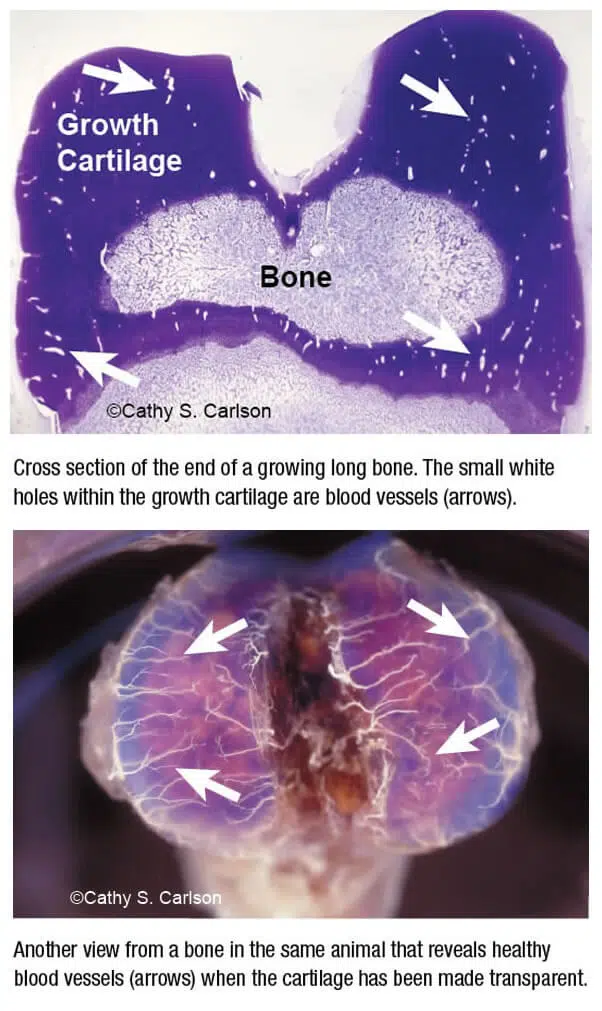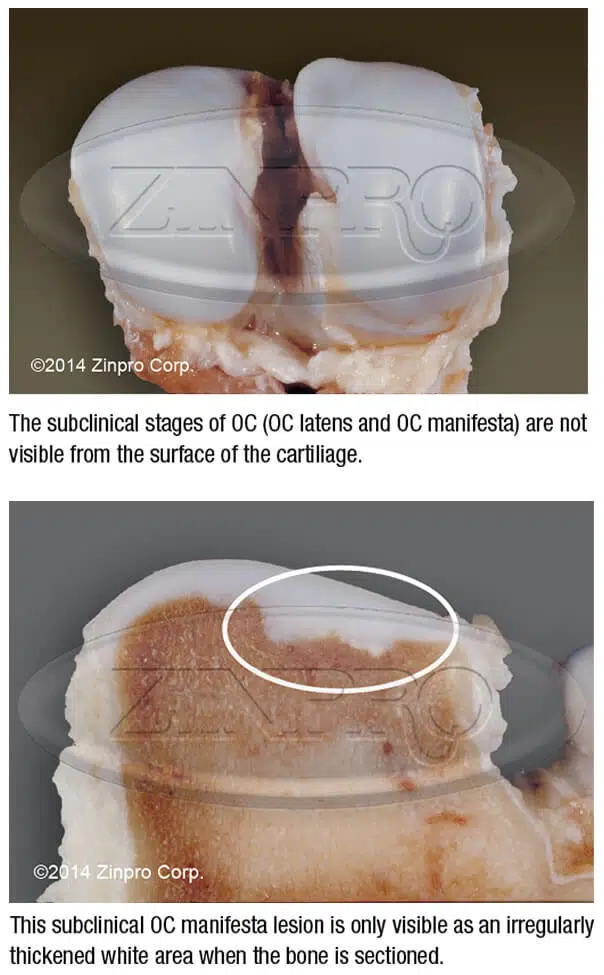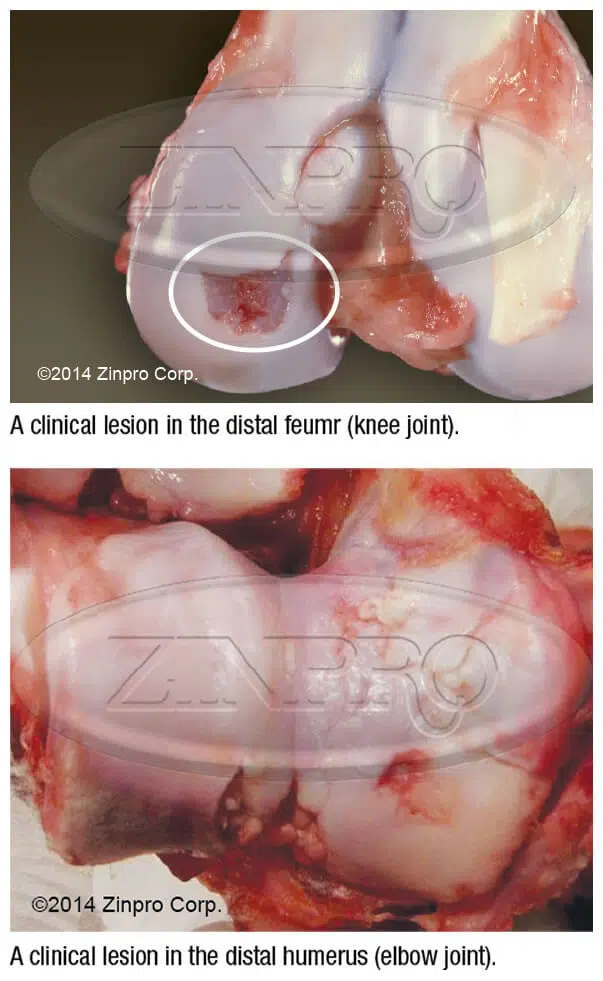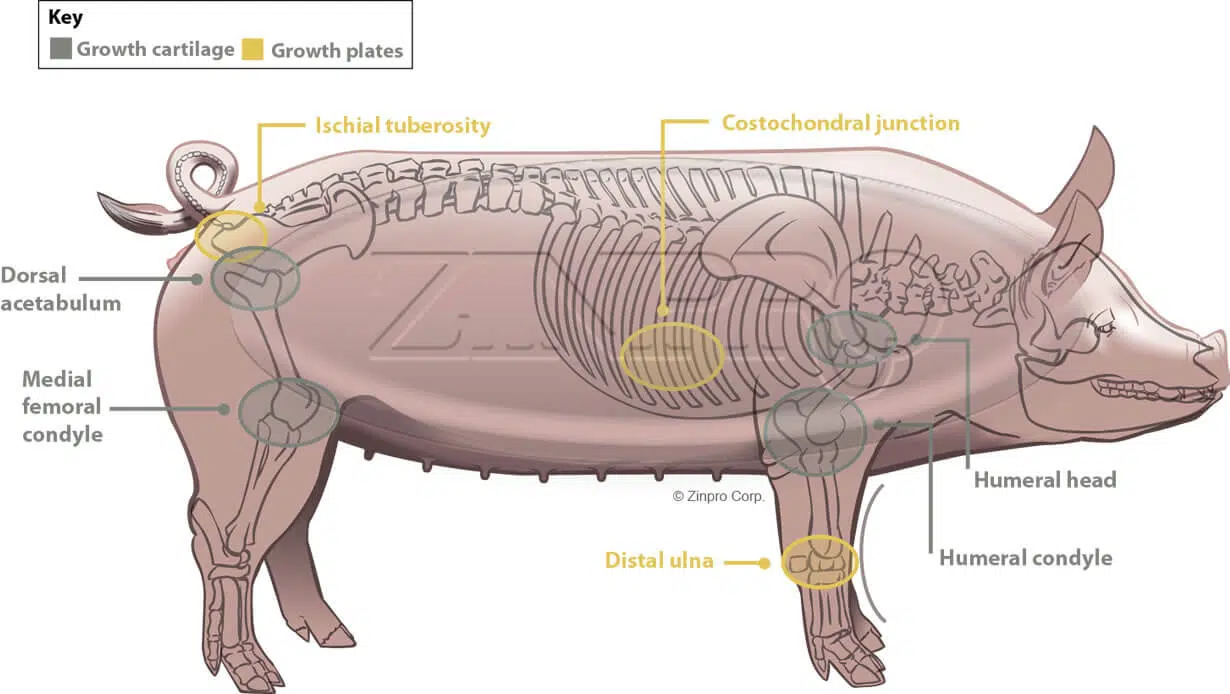Silent Disease Leads to Lameness and Lost Production | |||
Damage from osteochondrosis begins as early as 1 month of age
Swine lameness has many causes, but perhaps one of the most common — yet least understood — is osteochondrosis (OC). The disease is considered the leading cause of lameness and secondary joint disease in swine, according to Cathy S. Carlson, DVM, PhD, University of Minnesota. The condition develops as growth cartilage in the young pig begins to be replaced by bone (Figure 1). OC affects pigs as early as 1 month of age and the threat continues through 5 months of age, making it a critical factor in gilt development. The cost of OC to swine producers is linked to slower growth, higher mortality and loss of productivity. According to John Deen, DVM, PhD, University of Minnesota, the average loss for finishing pigs associated with lameness is $23 (USD) per head, while a diagnosis of lameness in the sow herd translates into a loss of $200 to $300 (USD) per sow.
In the early 1970s, OC was recognized as an important component of lameness in commercial swine operations and confinement systems as pigs were pushed for rapid growth. Research on OC began in Scandinavia more than 40 years ago where leg weakness proved to be an economic issue. OC is also a significant problem in horses and large breed dogs. Exploring OC development OC is a disorder of epiphyseal (or growth) cartilage that is located at the end of long bones (articular-epiphyseal cartilage complex), as well as in the growth plate. The disease occurs in highly predictable sites, primarily the ends of the humerus, ulna and femur with lesions frequently found bilaterally. In young pigs, the growth cartilage has an abundant blood supply. As the pig matures, the cartilage is gradually replaced by bone. However, when blood flow is restricted to growing cartilage, the cartilage dies, forming one of two types of subclinical lesions (Figure 2):
| ||||||||||||||||||
| | | | ||||||||||||||||
| | | | ||||||||||||||||
| Feet First® Update is a publication produced by Zinpro Corporation and the Feet First Team, an international collaboration of researchers, veterinarians and nutritionists. The Feet First program focuses on swine welfare and helping improve the efficiency of pork production through the identification and prevention of lameness. Articles may be reprinted with prior permission. Feet First® is a registered trademark of Zinpro Corporation. ©2014 Zinpro Corp. All rights reserved. You are receiving this email as a courtesy from Zinpro Corporation. Please know that you can unsubscribe at any time by sending us notice in writing, by calling or by clicking the unsubscribe link below. 10400 Viking Drive, Suite 240, Eden Prairie, MN 55344, USA • www.zinpro.com • +1 952-983-4000 | ||||||||||||||||||
| | | | ||||||||||||||||
Chemuniqué empowers feed and food producers with the most innovative animal performance solutions, enabling our clients to consistently advance the efficiency of production.














